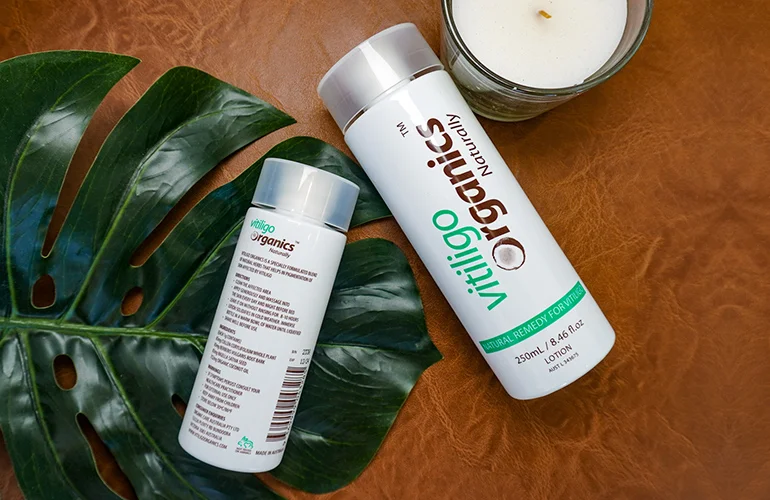Vitilinox has emerged as a notable natural treatment option for individuals dealing with vitiligo, an autoimmune condition leading to skin depigmentation. Marketed as both a topical cream and oral supplement, Vitilinox aims to stimulate natural re-pigmentation and improve immune regulation. This article provides an in-depth exploration of what Vitilinox is, how it works, its benefits and considerations, backed by authoritative sources.
1. Understanding Vitilinox: Form and Purpose
Vitilinox is marketed in two complementary forms:
Pigmentation Cream: Designed for direct application to depigmented skin patches, it claims to penetrate deeply to activate melanocytes, the pigment-producing cells. Users are advised to apply it once or twice daily on clean, dry areas.
T-Cell-V Capsules: An oral immune therapy supplement containing nutrients like Zinc, Vitamin D3, B-complexes, Selenium, and more. These ingredients aim to regulate immune responses and support melanogenesis, the process of melanin production.
Together, the dual approach targets both external skin restoration and internal immune balance.
2. The Science Behind Vitilinox Ingredients
Vitilinox combines several science-backed components that may support re-pigmentation and immune health:
- Zinc & Selenium: Crucial in melanogenesis, they also exhibit anti-inflammatory and immune-supportive properties.
- Vitamin D3: Enhances tyrosinase activity, an enzyme critical for melanin synthesis.
- B Vitamins & Folic Acid: Support cellular health, reduce stress, and promote skin regeneration.
These nutrients, combined with a topical cream, form a holistic approach to vitiligo care—though robust clinical evidence is limited.
3. Vitiligo: Context and Conventional Treatments
To understand Vitilinox’s role, it helps to know what vitiligo is and how it’s generally managed:
Vitiligo is an autoimmune disorder in which the body’s immune cells destroy melanocytes, causing white skin patches.
Common treatment strategies include:
- Topical Corticosteroids or Calcineurin Inhibitors: To reduce inflammation in early-stage vitiligo.
- Phototherapy (UVB): Light exposure to encourage pigmentation restoration.
- JAK Inhibitor (Ruxolitinib / Opzelura): A newer topical FDA-approved treatment for non-segmental vitiligo in those aged 12 and over.
These approaches are evidence-based, but they may not be suitable for everyone due to varying effectiveness, cost, or side effects.
4. How Vitilinox Stands Out in the Marketplace
Here’s what makes Vitilinox distinctive for individuals exploring natural or complementary therapies:
Dual-Action Approach: Combines topical treatment with oral supplementation aimed at both visible symptoms and underlying immune dynamics.
Natural Ingredients: Appeals to individuals seeking alternative or integrative therapies without relying solely on pharmaceutical interventions.
Ease of Use: The cream is easy to apply and compatible with makeup, while the capsule is a simple daily supplement.
However, unlike standard treatments, Viti linox lacks robust published clinical trials, and its efficacy remains more anecdotal than scientifically established.
5. Benefits and Considerations of Vitilinox Use
Benefits
- Holistic support for re-pigmentation and immune health.
- Gentle, natural formulation may benefit those sensitive to medical-grade treatments.
- Potential for use as early intervention or alongside other therapies.
Considerations
- Limited clinical evidence: No major peer-reviewed studies currently validate Viti linox results.
- Not FDA-approved: Lacks regulatory endorsement for efficacy or safety.
- Individual variability: Outcomes likely differ across patients and vitiligo types.
- Cost: Sustained use of both cream and capsules can be financially demanding without guaranteed results.
Anyone considering Viti linox should consult a dermatologist, especially if undergoing conventional treatment concurrently.
6. Practical Guidance: Using Vitilinox Wisely
If you decide to explore Vitilinox, here’s a responsible approach:
- Seek medical advice before starting—especially if you’re on medications or managing other health conditions.
- Use the cream on clean, dry areas, applying once or twice daily—follow manufacturer instructions.
- Take the T-Cell-V capsule once daily, ideally with breakfast for absorption benefits.
- Track progress with photos and dermatologist evaluations to objectively assess changes.
- Maintain sun protection, as depigmented areas are especially susceptible to UV damage.
- Combine Viti linox with other prescribed treatments only under medical supervision.
- Address the emotional impact of vitiligo through supportive counseling or community groups, important for comprehensive self-care.
Conclusion
Vitilinox offers a fresh, natural-oriented option for managing vitiligo through its topical cream and immune-supportive supplements. Its strengths lie in combining external care with internal support—though the lack of robust clinical backing means it should be approached thoughtfully.
For most people, evidence-based treatments like corticosteroids, phototherapy, and JAK inhibitors remain foundational. Vitilinox may complement these approaches for those seeking integrative or early-stage support—provided they involve medical oversight.





